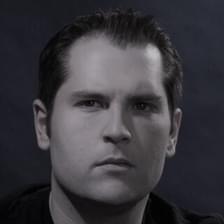draw on a double paired board
If the situation lines up correctly sometimes you can call with a draw on a double paired board.On the surface calling w...
Posted May 28, 2017
Contributor

Bart Hanson
Owner and Lead Pro
Professional Cash game trainer Bart Hanson has been producing strategy content for over fifteen years. He first started on Live at the Bike! back in 2005, then moved on to host "Cash Plays" on Poker Road, then "Deuce Plays" on Deuces Cracked and then to CrushLivePoker in 2012.
In his career as a professional poker player, Bart Hanson has:
-6 WSOP Final Tables
-Over 15 years of experience at the table
-Over $1,000,000 in tournament earnings
-Multiple appearances on ESPN and Poker Night in America
-4th place finish in 2019 WSOP Monster Stack
If the situation lines up correctly sometimes you can call with a draw on a double paired board @CrushLivePoker
If the situation lines up correctly sometimes you can call with a draw on a double paired board.
On the surface calling with a draw on a doubled paired board seems like suicide especially if you do not have showdown value. But occasionally, if all things line up correctly, the situation may warrant it.
I played a hand at the Commerce Casino last week that demonstrates such a scenario. Everyone at the table was at least $2000 deep and the game was $5-$10NL. A recreational, action player opened for a raise to $40 from UTG. I called in MP1 with 4♠ 5♠ and both the small blind and big blind called. The big blind was a recreational player, one of the better players in the entire player pool and is clearly a winning player.
The flop came out 3♠ 3♥ 2♠ giving me an open ended straight flush draw. Both the blinds and the preflop raiser checked so I bet out $90 into a pot of about $160. The small blind quickly folded but the big blind called. The preflop raiser got out of the way and we were heads up and saw a 2♣ turn.
Somewhat unexpectedly the BB now lead out for $105, under a one third pot sized bet. I was a little confused by this bet as I expected him to check his entire range on the turn, whether he had a three or a flush draw himself. He is a fairly tight player so it's very unlikely that he would call the flop with a hand like A2s. Upon first reaction I wanted to pounce on his bet and raise the turn but I did not think that that would be too believable. Then I thought over the situation more and it made sense that his action might be a sort of protection bet against draws with a hand like 55-TT. Facing this 1/3 pot size bet I was getting over 4-1 and only needed 20% equity to call. With a clean 15 out draw we have just over 30% equity. However in this particular case we have to worry about the reverse implied odds of the hand.
Reverse implied odds refer to a situation where we call with a draw assuming implied odds but our draw, when made, does not give us the best hand and we lose more money if it completes. This would be the case if he held say 66 and a 6♥ came in on the river. So the situation was particularly close but I decided with the overlay in the pot and the fact that I had an extra two outs to a straight flush to continue on.
The river brought in the K♠ completing my spade flush. He now checked and even though I am one of the thinnest value bettors in my player pool, felt that there was not any value in betting my small flush as I would not be called by worse. So I checked back the river and won at showdown versus 77.
This hand reminds me a lot of PLO where we are getting odds to draw but there are little implied odds when we make our hand. Situations rarely come up in Holdem where we call with a draw not expecting to make extra money, but it can happen when you have a draw with more than 14 outs and you are facing less than a pot sized bet. It would have been interesting if my opponent had bet the river again, especially big, and a case could be made for folding. But this is not necessarily inconsistent logic on my part because a bet on the river would change the action. The turn bet ended up being so small that all things lined up correctly and it allowed me to make a profitable call on fourth street.